Previous Research
Here you can find an overview of finished previous research of Computer Vision Group Jena containing limited time projects and research directions no longer continued. Please refer to our publication page to find the mentioned papers and articles.
Projects and Research Directions
Large-Scale Gaussian Processes with Flexible Adaptive Histogram Kernels
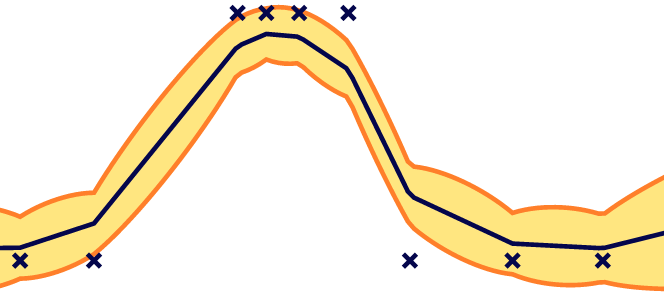
What statistical image properties characterize aesthetic paintings compared We present new methods for fast exact Gaussian process inference including multi-class classification, hyperparameter optimization, and uncertainty prediction in large-scale scenarios. The key observation of our methods is that the inherent properties of parameterized histogram intersection kernels can be exploited efficiently leading to significant time and memory benefits in several domains. In addition, contributions are made considering provable bounds for hyperparameter optimization, the identification of suitable linear solvers, a new active learning strategy, and incremental learning extensions. Evaluations are based on experiments with the large-scale real-world ImageNet database as well as the utilization of our techniques in the area of pixelwise labeling of images and active learning. The results show that inference can be done within microseconds and that every important piece of the Gaussian process framework (e.g., classification, hyperparameter optimization, variance estimation) can be also used in the presence of tens of thousands of examples.
E. Rodner, A. Freytag, P. Bodesheim, B. Fröhlich, and J. Denzler.. Large-Scale Gaussian Process Inference with Generalized Histogram Intersection Kernels for Visual Recognition Tasks . International Journal of Computer Vision (IJCV). 121 (2), pages 253-280. 2017.
Part Model Discovery

Most approaches in the field of fine-grained recognition rely on human annotated part locations for training. However, semantic parts are not necessarily the best for discrimination. In addition to this, it prevents approaches in this field to be applied to generic datasets like ImageNet. In the area of part discovery, we aim to identify discriminative object parts in an unsupervised way. This will allow us to improve recognition rates in fine-grained tasks and to transfer knownledge from this area to other tasks.
M. Simon, E. Rodner, and J. Denzler. Part Detector Discovery in Deep Convolutional Neural Networks . Asian Conference on Computer Vision (ACCV). 2014.
M. Simon and E. Rodner. Neural Activation Constellations: Unsupervised Part Model Discovery with Convolutional Networks. International Conference on Computer Vision (ICCV). 2015
Animal Locomotion Analysis
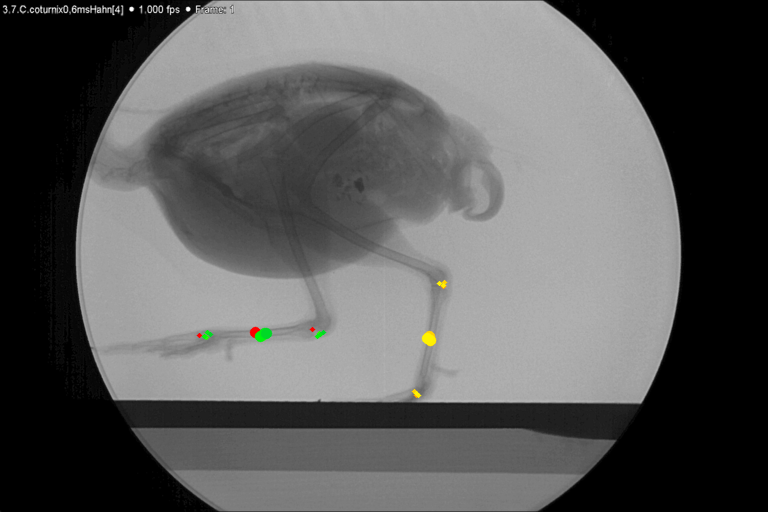
The detailed understanding of animal locomotion plays an important role in many fields of research, e.g., biology, motion science, and robotics. In order to analyze the locomotor system in vivo, high-speed X-ray acquisition is applied where the retrieval of anatomical landmarks is of main interest. To this day, the evaluation of these sequences is a very time-consuming task, since human experts have to manually annotate anatomical landmarks in single images. Therefore, an automation of this task at a minimum level of user interaction is of urgent need. In this project computer vision principles combining with machine learning methods tackle this task of automation.
O. Mothes and J. Denzler. One-Shot Learned Priors in Augmented Active Appearance Models for Anatomical Landmark Tracking. Computer Vision, Imaging and Computer Graphics — Theory and Applications. 2019.
D. Haase and J. Denzler. 2D and 3D Analysis of Animal Locomotion from biplanar X-ray Videos using Augmented Active Appearance Models. EURASIP Journal on Image and Video Procesing. 2013.
Biomedical Image Analysis
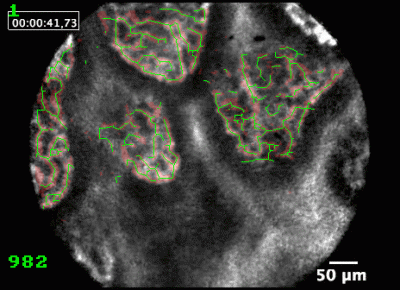
Modern imaging methods create huge amounts of data that can hardly be interpreted by experts in time. Thus, the automatic segmentation and classification of anatomical and pathological structures is a major topic in biomedical image processing. Depending on the imaging techniques (X-ray, MRI, CT, CLE, CLSM, etc.) we are faced with certain kinds of noise and imaging artefacts. Typical traditional image processing techniques can not be applied directly. In different projects we developed special methods and approach to overcome these issues. Furthermore, we created programs and methods to support physicians and biologists in their research.
A. Dittberner, E. Rodner, W. Ortmann, J. Stadler, C. Schmidt, I. Petersen, A. Stallmach, J. Denzler, O. Guntinas-Lichius.. Automated Analysis of Confocal Laser Endomicroscopy Images to Detect Head and Neck Cancer. Head & Neck 38 (1). 2015.
M. Körner, M. V. Krishna, H. Süße, W. Ortmann, and J. Denzler. Regularized Geometric Hulls for Bio-medical Image Segmentation. Annals of the BMVA. 2015.
Model Transfer for Active Appearance Models
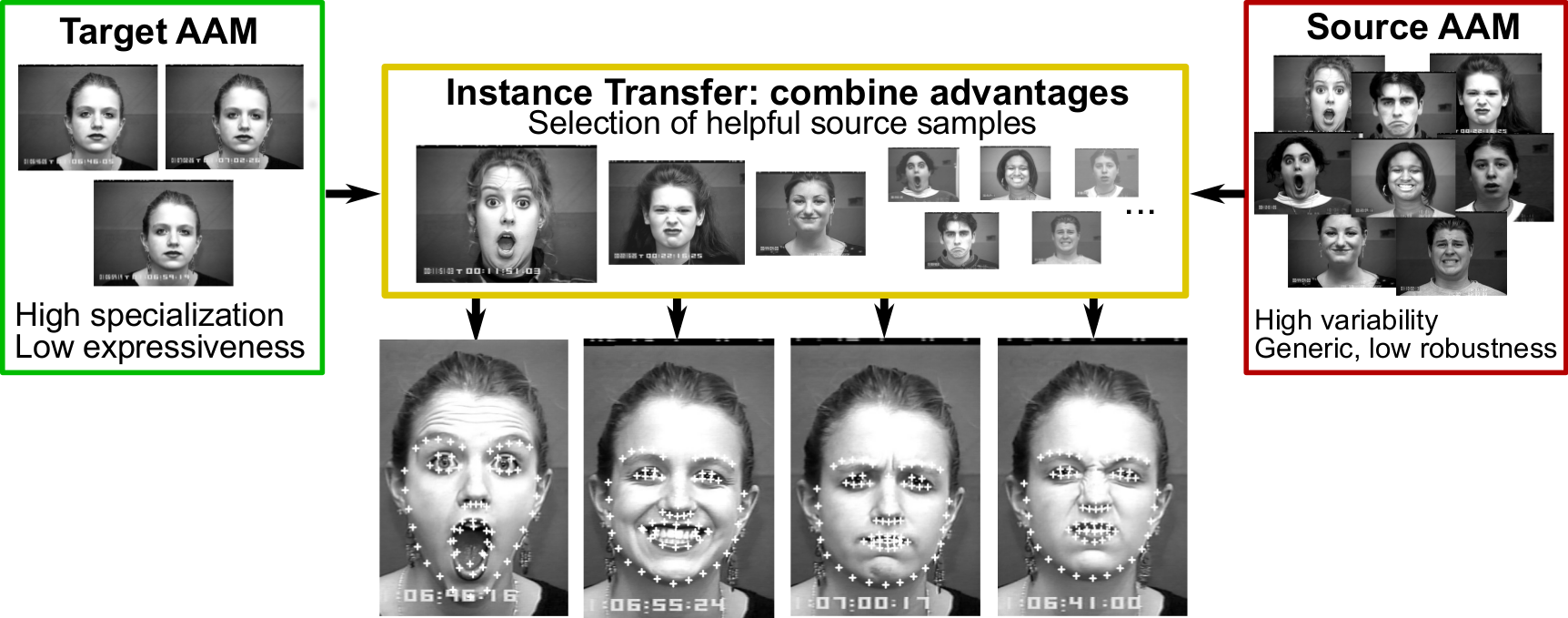
For the purpose of object modeling, landmark detection and analysis Active Appearance Models (AAM) are one of the most successful used methods. AAM are statistical generative models that can describe deformable objects based on a shape and a (shape-free) texture component. During training principle component analysis (PCA) is performed on training images with annotated landmarks to get a parameterised description of the shape and texture. A large drawback of this method is the large number of annotated of images, that is used for the training step. When learned only on a few examples AAMs show a weak generalisation ability. A possible strategy would be to extend an existing AAM with a small amount of meaningful images. This can be done using transfer learning, a technique that has been gained more and more attention in the last years. By transferring the new information into the target model we overcome the above mentioned drawback of AAM.
D. Haase, E. Rodner, and J. Denzler. Instance-weighted Transfer Learning of Active Appearance Models. IEEE Conference on Computer Vision and Pattern Recognition (CVPR). 2014.
Urban Scene Understanding
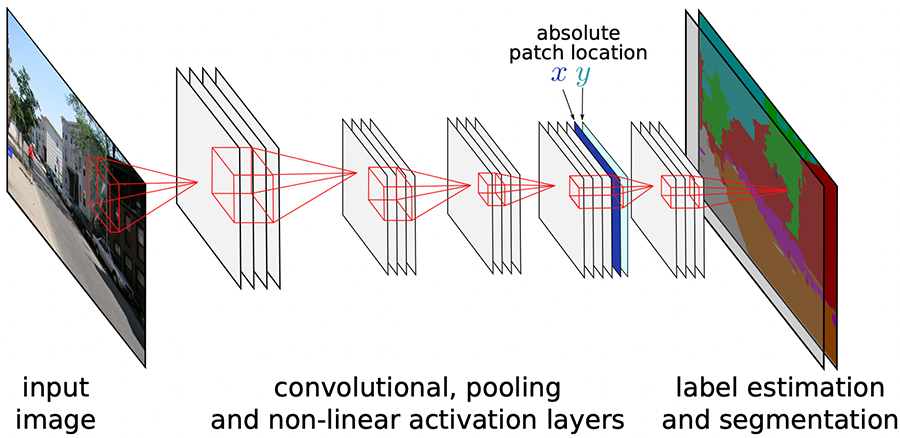
Semantic interpretation and understanding of images is an important goal of visual recognition research and offers a large variety of possible applications. One step towards this goal is semantic segmentation, which aims for automatic labeling of image regions and pixels with category names. We developed multiple techniques and approaches to tackle this task. In earlier works we created ways to iteratively enrich standard image features with contextual cues for machine learning methods like random forests and Gaussian processes. Later on, we also incorporated global context information into deep learning methods. Typical application scenarios are road detection and the semantic understanding of urban scenes in general.
C.-A. Brust, S. Sickert, M. Simon, E. Rodner, and J. Denzler. Convolutional Patch Networks with Spatial Prior for Road Detection and Urban Scene Understanding. International Conference on Computer Vision Theory and Applications (VISAPP). 2015.
B. Fröhlich, E. Rodner, and J. Denzler. Semantic Segmentation with Millions of Features: Integrating Multiple Cues in a Combined Random Forest Approach. Asian Conference on Computer Vision (ACCV) 2012.
Aesthetic Quality Assessment of Paintings and Other Images
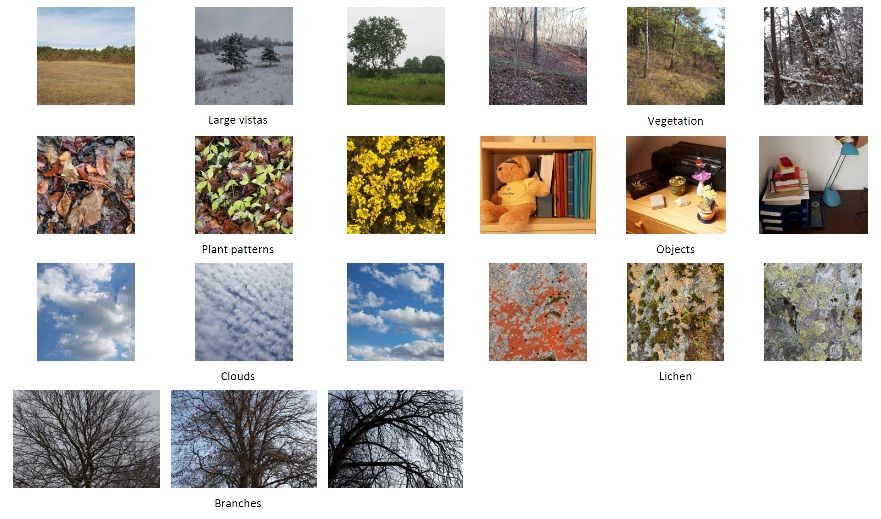
What statistical image properties characterize aesthetic paintings compared to other aesthetic and non-aesthetic types of images? Recent research results give a hint at a possible connection of the image statistics of natural scenes and aesthetic visual art. This connection and the special statistical image properties of aesthetic visual art are the main goal of this research topic.
J. Denzler and E. Rodner, and M. Simon. Convolutional Neural Networks as a Computational Model for the Underlying Processes of Aesthetics Perception. ECCV Workshop on Computer Vision for Art Analysis. 2016.
S. A. Amirshahi, C. Redies, and J. Denzler. How Self-Similar are Artworks at Different Levels of Spatial Resolution?. AIC Congress. 2013. Award-winning poster.
Further Topics of the Past
- Interaction Recognition
- Vulnerability Prediction in Automotive Scenarios
- Traffic Video Scene Understanding
- Learning with Few Examples
- Multi Camera Systems
- Object Tracking
- Generic Object Recognition
- Planar Reconstruction
- Next Best View Planning
- Active Selection of Sensor Data
- Reconstruction of Plenoptical Patterns
- Adaptive Sensor Data Fusion
